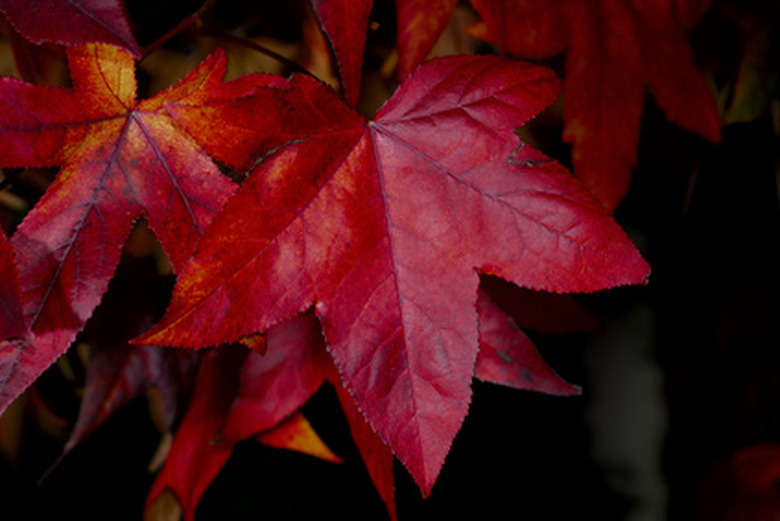Ornamental Tree Leaf Identification
We grow trees from all over the world in our gardens, hundreds of different kinds, and identifying a tree you like but don't know the name of can be challenging. Accurate identification requires looking at the flowers because unrelated trees can have similar leaves but getting to know the typical leaf shapes, textures, shades of green and other characteristics of each group of trees makes identification of individual species much easier.
Shapes
The most obvious thing about a leaf is its shape, and it's worth learning the botanical terms for different shapes because they help you to notice and remember the various ways leaves can appear. Oval and round are easy, but if the leaf is wider at the top than the bottom, it's obovate. Chordate means heart-shaped ,and palmate means having lobes or leaflets radiating from the bottom, like your palm. Maple leaves are an example of a palmate shape.
A leaf may be lobed, either shallowly or deeply, perhaps palmately lobed. It can also be cut into many leaflets arranged along the midrib of the leaf, or pinnate. These might in turn be lobed or even bi-pinnate, the leaflets themselves divided into leaflets.
- We grow trees from all over the world in our gardens, hundreds of different kinds, and identifying a tree you like but don't know the name of can be challenging.
- It can also be cut into many leaflets arranged along the midrib of the leaf, or pinnate.
Leaf Margins
Often the edges of the leaves are smooth but they can be wavy or toothed. The teeth may even be cut into teeth themselves. Each of these is a clue to the identity of your tree. Sometimes there are short hairs edging the leaf margin.
Texture
The. surface may be waxy or rough, hairy or wavy like seersucker cloth. Notice also the texture of the leaf as a whole — thin and droopy, thick or papery. The veins of the leaf may be prominent or barely noticeable, and certain trees, such as dogwoods, have the veins arranged in a unique way.
- Often the edges of the leaves are smooth but they can be wavy or toothed.
- The veins of the leaf may be prominent or barely noticeable, and certain trees, such as dogwoods, have the veins arranged in a unique way.
Turn the leaf over and look at the underside. Some plants have a soft felt or down beneath. The color may be similar or much lighter. The more you touch and feel tree leaves, the more you'll notice about how they differ.
Color
Trees often have individual shades of green that, once you recognize them, allow you to pick out individual varieties from a distance, even driving down the road. As spring leaves unfold, the color is brighter, and in autumn the greens turn to typical shades of yellow, orange and red. Once you know the name of a tree, stand back and notice how it appears in contrast to nearby specimens. The glossiness of the leaves, the shapes and sizes and the exact shade of green all combine to give each type of tree an individual character that is distinctive.
- Turn the leaf over and look at the underside.
- Trees often have individual shades of green that, once you recognize them, allow you to pick out individual varieties from a distance, even driving down the road.
Attachment
Each leaf is attached to a shoot or branch, usually with a short stem called a petiole. Notice whether the leaves are arranged opposite each other or alternately along the branch. This is a key point in identification for each genus and, often, for families of plants.
